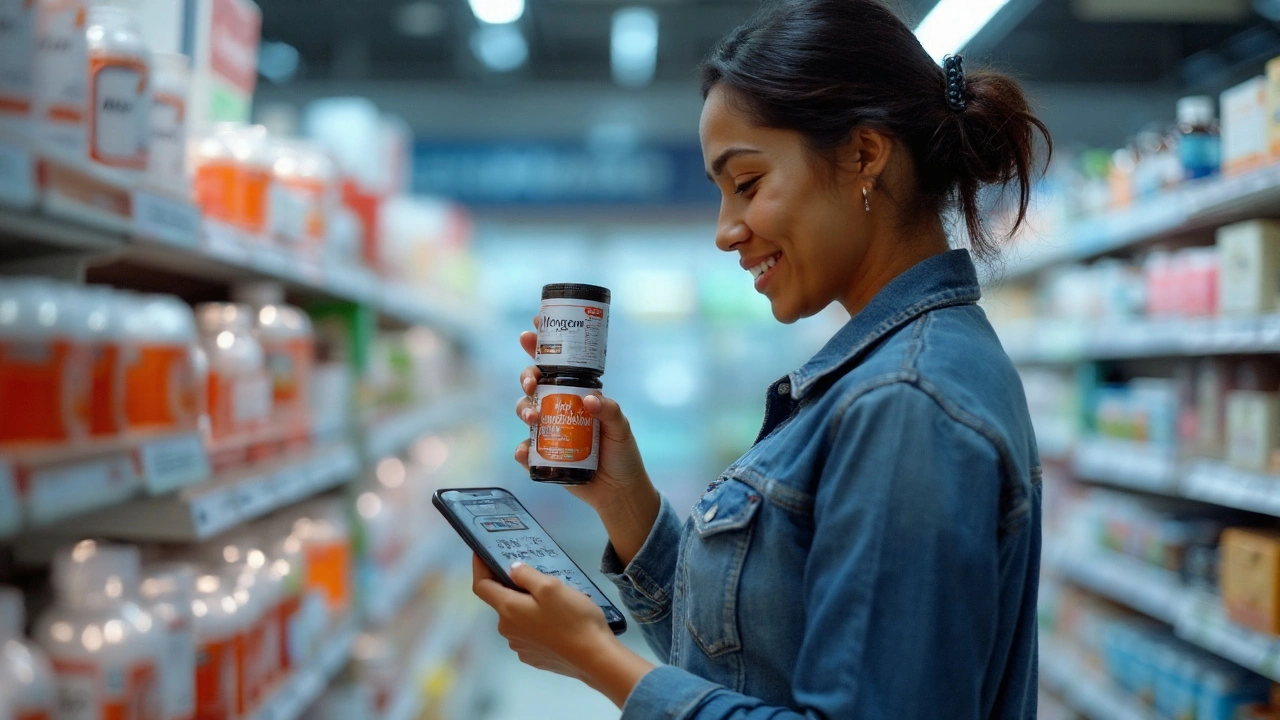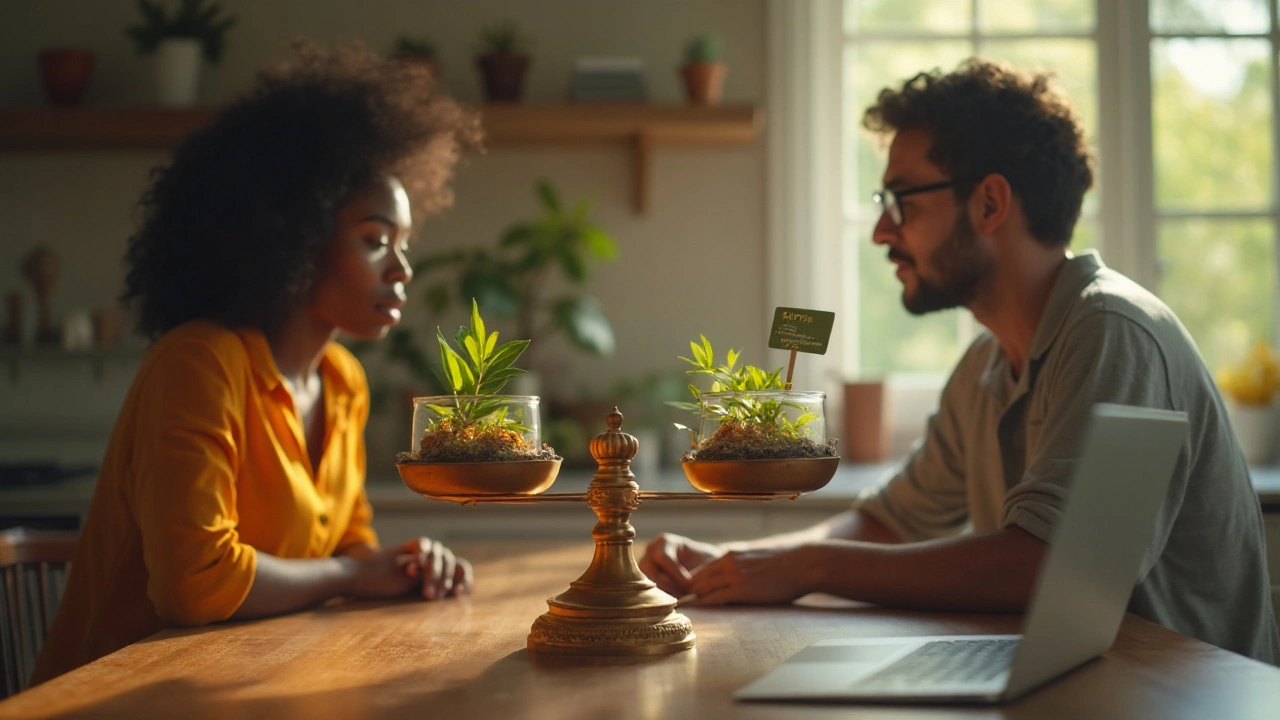Here’s the twist most ads skip: the same rhododendron family linked to “mad honey” episodes-sudden dizziness, low blood pressure, a crawling slow heartbeat-is the one being bottled as wellness capsules. If you’re curious about Rusty-Leaved Rhododendron supplements, you deserve straight talk. I’ll show you what’s actually known about benefits, how to spot safety red flags on a label, what a fair 2025 price looks like, who should steer clear, and which alternatives give you the effect you want without the cardiology plot twist.
What Rusty-Leaved Rhododendron Is-and What Marketers Promise
“Rusty-leaved rhododendron” usually refers to Rhododendron ferrugineum L., also called Alpenrose. It’s a gorgeous Alpine shrub with leaves that look rusty underneath. In supplement listings, you’ll see claims like joint support, immune balance, antioxidant protection, even stress relief. Those claims lean on two things: its place in European folk medicine and the general halo around “plant antioxidants.”
Here’s the reality check. Rhododendron is an Ericaceae plant family known for grayanotoxins-compounds that can mess with voltage-gated sodium channels in your heart and nerves. That’s why “mad honey” poisonings happen when bees forage Rhododendron species. The headline symptoms? Nausea, vomiting, sweating, dizziness, tingling, marked bradycardia (slow heart rate), and hypotension. Emergency case reports describe stabilization with fluids and atropine. So if a supplement contains actual R. ferrugineum leaf without careful toxin control, the risk isn’t theoretical.
Do we have strong human trials showing health benefits from R. ferrugineum leaf extract? No. There’s traditional use, some chemistry papers on rhododendron flavonoids (varies by species), and a handful of small or preclinical studies on other rhododendron species (like R. caucasicum or R. arboreum). But for rusty-leaved specifically, clinical evidence is thin to none.
One more potential confusion: homeopathic “Rhododendron” exists, but homeopathy uses ultra-dilutions that often contain no measurable molecules of the plant. That is not the same as an herbal extract capsule. Do not assume safety carries over between the two.
What the Science Actually Says (Benefits vs. Risks)
Let’s split this clearly.
- Potential benefits (theory and tradition): antioxidant support; anecdotal use for aches; circulatory “toning.” These are drawn from folk use and general plant chemistry expectations-not robust human trials for R. ferrugineum.
- Known risks (documented): grayanotoxin exposure can cause sudden-onset nausea, vomiting, salivation, sweating, dizziness, paresthesias, hypotension, bradycardia, and conduction abnormalities. This is described in toxicology texts and multiple peer-reviewed case reports of “mad honey” poisoning.
Authoritative signals from public agencies and medical literature:
- Food safety bodies in Europe have assessed grayanotoxins in honey, flagging acute cardiotoxic effects even at modest exposures. That risk extends to plant materials from toxin-bearing rhododendron species.
- No major pharmacopoeia or the U.S. NIH Office of Dietary Supplements provides a clinical monograph endorsing internal use of R. ferrugineum leaf. In short: no recognized “safe daily dose.”
- Emergency medicine literature documents consistent symptom patterns and treatment with atropine for bradycardia. These aren’t edge cases-they’re repeatable, well-described presentations.
Bottom line on efficacy vs. safety for R. ferrugineum: the benefits are speculative; the risks are concrete. If you’re chasing antioxidants or joint comfort, there are safer, better-studied options.
Not all “rhododendron” species are equal, and some supplements actually use different species (like R. caucasicum, sometimes called snow rose). Here’s a condensed, practical snapshot you can use when reading labels:
| Plant/species | Common part used | Evidence for internal use | Key risk | Status for internal use (2025) |
|---|---|---|---|---|
| Rhododendron ferrugineum (rusty-leaved) | Leaf (sometimes listed as “rhododendron leaf”) | Human trials: none/very limited | Grayanotoxins → bradycardia, hypotension | Not supported by major monographs; safety uncertain |
| Rhododendron caucasicum (snow rose) | Leaf | Small preclinical/legacy Soviet-era reports; limited modern human data | Potential grayanotoxin presence varies by source | Occasional use in niche supplements; needs toxin testing |
| Rhododendron arboreum (burans) | Flower (culinary in Himalaya) | Some traditional/food use; limited clinical data | Species variability; processing matters | Food traditions exist; supplement quality control is key |
| Rhodiola rosea (not a rhododendron) | Root | Multiple human trials for fatigue/stress; quality varies | Insomnia/jitteriness at high doses; usually mild | Well known adaptogen; look for third-party testing |
Heuristic you can trust: if a rhododendron product doesn’t specify the species, the plant part, and independent grayanotoxin testing, skip it.

How to Shop Safely: Labels, Specs, and Pricing in 2025
If you still want to evaluate a product, treat this as a safety-first purchase. You’re not just buying a plant-you’re buying the lab work behind it.
Label must-haves:
- Full Latin binomial: “Rhododendron ferrugineum,” “R. caucasicum,” etc. “Rhododendron sp.” is a red flag.
- Plant part: leaf, flower, etc. Leaf is higher risk for toxins.
- Standardization: what’s quantified? If it lists “polyphenols” but says nothing about grayanotoxins, that’s not enough.
- Toxin testing: explicit “grayanotoxin tested” with batch-specific certificates (COA). Ideally tested by an ISO 17025 accredited lab, USP- or NSF-aligned.
- Lot/batch number and QR code to a COA. If customer support won’t share the COA, treat it as a no.
Specs to look for:
- Transparent solvent/extraction method (e.g., “hydroethanolic 50%,” “aqueous infusion”). Avoid mystery extracts.
- Microbial, heavy metal, and pesticide screening. Rhododendrons can accumulate contaminants depending on soil.
- Capsule count and per-capsule extract amount (e.g., 250 mg). Avoid “proprietary blend” without amounts.
2025 pricing reality check (U.S./EU online):
- Unstandardized “rhododendron leaf” bottles: often $15-$28 for 60-120 capsules. These are usually the riskiest-cheap, vague labels, no toxin data.
- Species-identified with third-party testing: $25-$45 for 30-60 servings. Niche makers charge more because toxin assays add cost.
- Powdered tea cuts or bulk loose leaf: $12-$25 per 100 g. Brewing leaf tea raises extraction concerns for grayanotoxins-hard pass without validated toxin-negative lots.
Terms and ethical buying tips:
- Only buy from brands that publish a batch COA on request. No COA, no checkout.
- Look for third-party seals (USP Verified, NSF Contents Certified) knowing that many niche botanicals won’t have them-but their absence raises the burden on COAs.
- Avoid “proprietary blends” that hide doses. Dosage opacity and toxin opacity tend to travel together.
- Check the return policy. If you react, you want a no-hassle refund.
Quick safety checklist before you buy:
- Species named?
- Plant part disclosed?
- Grayanotoxin testing shown for THIS batch?
- Independent lab, with method noted?
- Your health profile compatible? (See next section.)
Who Should Avoid It and How to Mitigate Risk
Skip rhododendron supplements entirely if any of these apply:
- Heart rhythm issues, low resting blood pressure, syncope history.
- On beta-blockers, calcium channel blockers, antiarrhythmics, or multiple antihypertensives.
- Pregnant, trying to conceive, or breastfeeding.
- Children and teens.
- History of severe reactions to botanicals or unknown “mad honey” exposure.
If you’re medically cleared and determined to experiment, mitigate like a pro:
- Work with a clinician who understands herbs and your meds. Bring the product COA.
- Start with a micro-dose (e.g., 1/4 labeled serving), in daylight, with someone home, and a blood pressure/heart rate monitor nearby.
- Avoid combining with other blood pressure-lowering agents, alcohol, or sedatives.
- Stop immediately and seek care if you feel intense dizziness, nausea, tingling, unusual sweating, or your resting heart rate drops sharply.
Decision tree you can actually use:
- If the label doesn’t name the species and show batch toxin testing → don’t buy.
- If you’re on heart/blood pressure meds → don’t buy.
- If you want antioxidants or joint comfort without risk → use the alternatives below.
- If you’re still set, bring your clinician into the decision and insist on a tested, low-dose, time-limited trial.

Smarter Alternatives and a Safe Action Plan
Match the claimed benefit to a safer, better-studied option:
- Antioxidant support: mixed berry polyphenols, green tea extract (EGCG), or curcumin with piperine-all with human data. Choose brands with third-party testing.
- Joint comfort: curcumin phytosome, boswellia (AKBA-standardized), or undenatured type II collagen (UC-II). These have RCTs behind them.
- Stress/fatigue: Rhodiola rosea root (standardized to rosavins/salidroside). Not a rhododendron, despite the similar name.
- Circulatory tone (mild): French maritime pine bark (pycnogenol) or grape seed extract (OPCs), both with cardiovascular-leaning data.
Starter protocols (evidence-backed baselines; confirm with your clinician):
- Curcumin phytosome: common studied range 500-1000 mg/day with food; watch for GI upset and med interactions (especially anticoagulants).
- Boswellia (AKBA 10%): 100-250 mg, 2-3×/day; look for “beta-boswellic acids reduced” labeling for better GI tolerance.
- Rhodiola rosea: 200-400 mg/day standardized; take earlier in the day to avoid sleep disruption.
- Green tea extract (EGCG): keep total EGCG under commonly recommended daily caps to protect the liver; choose products that specify EGCG content and provide a COA.
Ethical CTA: If you still want the rhododendron route after reading this, do it right-bring your clinician into the loop, demand species identification and toxin testing, and keep your trial short with careful monitoring. Your heart rhythm is not a supplement experiment.
FAQ (quick answers)
- Is rusty-leaved rhododendron the same as rhodiola? No. Rhodiola rosea is a different plant family and generally safer with better data.
- Can I just brew a tea? Brewing leaf tea may extract toxins. Without validated toxin-negative lots, that’s a risky DIY.
- Is there a safe dose? No authoritative body sets a safe internal dose for R. ferrugineum leaf. That’s your sign.
- What if I already bought a bottle? Contact the seller for the batch COA showing grayanotoxin testing. If they won’t provide it, return it unopened.
- What symptoms mean stop now? Sudden dizziness, nausea/vomiting, unusual sweating, tingling, chest discomfort, or a noticeably slow pulse. Seek care.
Next steps and troubleshooting, by scenario
- Seeking joint relief fast: Swap to curcumin phytosome + boswellia; reassess in 2-4 weeks. Layer gentle movement and sleep hygiene.
- On blood pressure meds but curious: Don’t use rhododendron. Consider grape seed extract (OPCs) only with your clinician’s okay; monitor BP at home.
- Athlete chasing recovery: Try Rhodiola rosea in the morning; add mixed polyphenols post-workout; keep hydration and protein dialed.
- Already took a rhododendron capsule and feel off: Sit or lie down, hydrate. If lightheaded, sweaty, nauseated, or your HR feels slow, call for medical help. Bring the bottle to the clinic.
- Label looks vague: No species, no part, no toxin data? That’s your cue to pass. There are too many safer options to settle for mystery plants.
I’m not here to scare you-just to keep you safe and get you to the results you want with the least drama. If a plant demands lab-grade vigilance to use, it belongs in a research setting or under a clinician’s eye. Your wellness routine shouldn’t require an emergency department backup plan.
